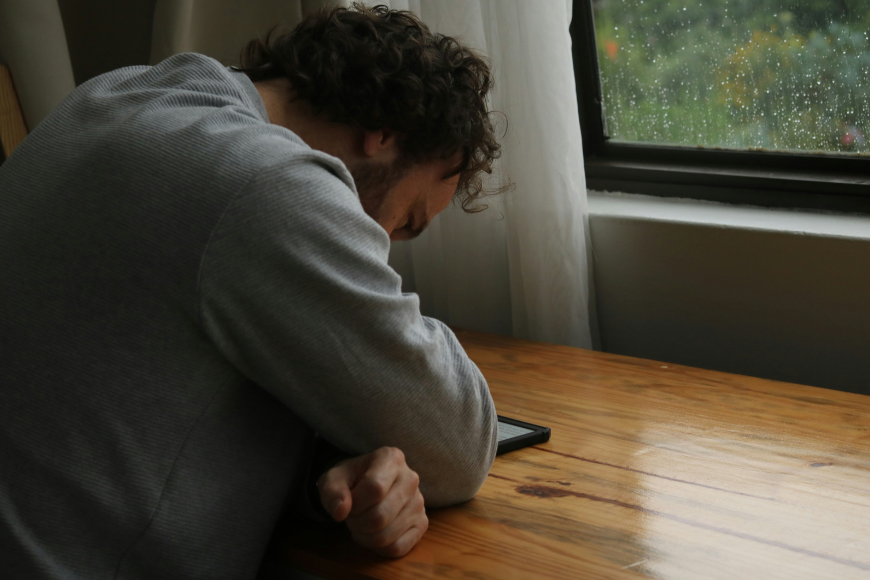Idaho, Iowa, Des Moines

If you’ve ever tried to sit still and “empty your mind” in the name of mindfulness and felt like your brain was throwing a rave instead, you likely were left with the sense that you’re a complete and utter failure. Mindfulness can be an incredible tool for managing anxiety and ADHD, but it’s also one that many people with ADHD really struggle with. You’re not alone if mindfulness feels like something you just don’t quite get. But this is often because traditional mindfulness and meditation practices don’t work for ADHD brains.
The good news is, that doesn’t mean mindfulness isn’t for you. It just means you have to reimagine what mindfulness looks like for you. The goal of meditation for ADHD isn’t to perfect the art of stillness (good luck with that), but rather to create moments of presence in a way that feels natural and supportive to you.

Here’s the thing about ADHD: your brain is wired differently, which means you experience the world differently. ADHD brains have lower levels of dopamine and norepinephrine, two neurotransmitters that help regulate focus and reward. Therefore, your brain is constantly seeking stimulation to feel balanced. When you try to do commonly prescribed mindfulness exercises, which often look like sitting still and focusing on one thing, your brain’s natural response might be to shut down or throw a rave instead. There might simply not be enough going on, and you’ll end up hating it and feeling like a failure.
For example, you might sit down to meditate, but instead of feeling relaxed, your brain starts spinning even harder. You might feel more anxiety in your body as a result and assume, therefore, that you’re bad at it. The truth is, you aren’t. Your brain just needs a different approach. ADHD isn’t about a lack of focus; it’s about difficulty regulating where your focus goes. And traditional mindfulness practices often don’t account for this.
Contrary to popular belief, mindfulness isn’t about clearing your mind or achieving perfect calm. At its core, mindfulness is about paying attention to what’s happening in the present moment without judgment. It’s not about erasing anxiety or negative thoughts. Instead, it’s just staying with yourself through whatever comes up, even (especially) when things feel messy or uncomfortable.
For a lot of people with ADHD, the idea of sitting still and doing nothing sounds less like relaxation and more like torture. ADHD brains process a ton of information all at once, and staying focused on just one thing, like your breath, can feel impossible. But mindfulness is so much more flexible than it’s often made out to be. It doesn’t have to look like deep breathing or sitting cross-legged on a cushion in silence for an hour.
For ADHD brains, mindfulness might mean noticing the texture of your beverage on your tongue, feeling the rhythm of a favorite song, or noticing how the wind feels on your face on a bike ride. It’s simply about being with yourself and being present in whatever way works for you.

Traditional meditation often emphasizes stillness and single-point focus. But ADHD brains struggle with these exact things. So what else can mindfulness look like?
Good rules of thumb for making mindfulness work for you are to add in movement, keep it simple, and consciously lower the bar of what success “should” look like. Here are 7 ways to make mindfulness work for your ADHD brain.
It makes sense if you live with ADHD and have also struggled with mindfulness or grounding practices in the past. It’s not because you’re “bad” at them or that mindfulness just isn’t right for you. ADHD brains need stimulation, structure, and flexibility, all of which traditional mindfulness approaches often overlook. The key is finding what works for you.
Mindfulness and ADHD can coexist beautifully, but it might take some experimenting to get there. So give yourself grace, get creative, and remember that mindfulness isn’t about being perfect. It’s about showing up for yourself, exactly as you are, one moment at a time.
If you want support figuring out how to make mindfulness work for you, I’m here to help. Learn more about my therapy services (including EMDR and talk therapy) if you’re located in Idaho, Iowa, or South Carolina. For all other locations, check out my coaching services. My coaching program offers all the same expertise, tools, and guidance as therapy in a more direct and goal-oriented approach that you can benefit from anywhere.
Reach out today to schedule a complimentary consultation and see if we’re a good fit. Let’s start building a better future together.
Danielle is an anxiety therapist and perfectionism coach. She specializes in helping busy millennials dial down their anxiety and ADHD, so they can perform at their best. Danielle has been featured on Apartment Therapy, SparkPeople, Lifewire, and Now Art World. When Danielle isn't helping her clients, she's playing video games or spending time with her partner and step children.


